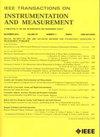A Lithium-Ion Battery SOH Prediction Method: Temporal Dual-Channel Networks Transfer and Error Compensation Under the EMD Framework
IF 5.6
2区 工程技术
Q1 ENGINEERING, ELECTRICAL & ELECTRONIC
IEEE Transactions on Instrumentation and Measurement
Pub Date : 2025-02-03
DOI:10.1109/TIM.2025.3538072
引用次数: 0
Abstract
Lithium-ion batteries’ state of health (SOH) predictions are essential for the safe use of batteries. SOH prediction methods based on the empirical mode decomposition (EMD) framework can effectively suppress the negative impact of capacity regeneration (CR), while the problem of data distribution discrepancy is not considered. To tackle this problem, a prediction method with models transfer and error compensation under the EMD framework is proposed. First, the dynamic time warping (DTW) algorithm is used to select a reference lithium-ion battery from the dataset. Second, the intrinsic mode functions (IMFs) are acquired from the capacity data decomposed by improved complete ensemble EMD with adaptive noise (ICEEMDAN), and the IMFs are reconstructed based on the Hurst exponent values. Then, the proposed temporal dual-channel networks (TDCNs) are pre-trained by the reconstructed IMFs of the reference battery and fine-tuned by the reconstructed IMFs of the target battery. An error compensation method based on secondary decomposition is proposed for further improvement of the prediction accuracy. The error sequence is decomposed by variational mode decomposition (VMD) and predicted by TDCNs. The final SOH prediction results are acquired based on the preliminary capacity predictions and the error predictions. The effectiveness of the proposed method is validated on NASA Prognostics Center of Excellence (PCoE) and Center for Advanced Life Cycle Engineering (CALCE) datasets. The results show that, after introducing the models transfer method, the root-mean-square errors (RMSEs) of the prediction results for the two datasets have been reduced by 90.0% and 95.6% on average, respectively. After error compensation, the RMSEs have been reduced by 62.9% and 66.6% on average, respectively.求助全文
约1分钟内获得全文
求助全文
来源期刊

IEEE Transactions on Instrumentation and Measurement
工程技术-工程:电子与电气
CiteScore
9.00
自引率
23.20%
发文量
1294
审稿时长
3.9 months
期刊介绍:
Papers are sought that address innovative solutions to the development and use of electrical and electronic instruments and equipment to measure, monitor and/or record physical phenomena for the purpose of advancing measurement science, methods, functionality and applications. The scope of these papers may encompass: (1) theory, methodology, and practice of measurement; (2) design, development and evaluation of instrumentation and measurement systems and components used in generating, acquiring, conditioning and processing signals; (3) analysis, representation, display, and preservation of the information obtained from a set of measurements; and (4) scientific and technical support to establishment and maintenance of technical standards in the field of Instrumentation and Measurement.
 求助内容:
求助内容: 应助结果提醒方式:
应助结果提醒方式:


